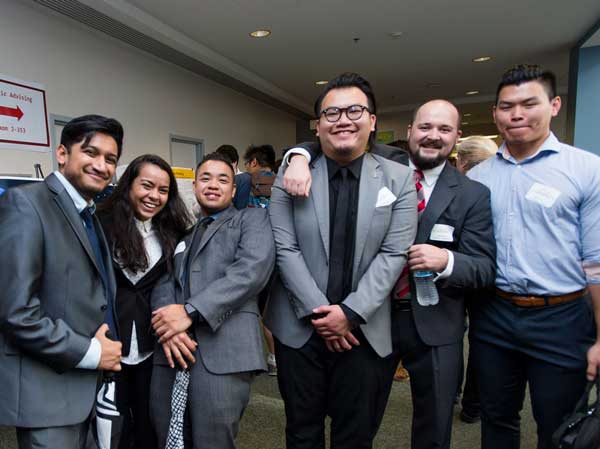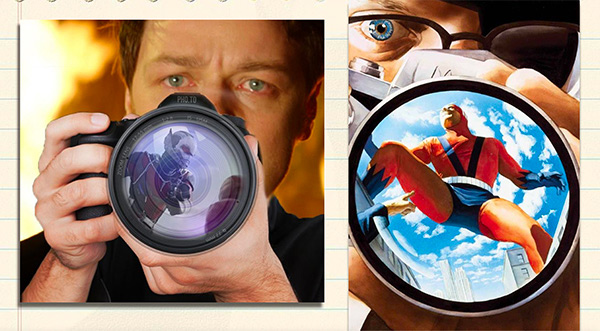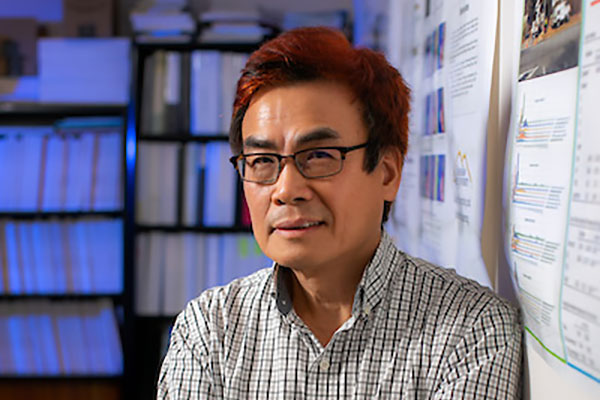
Virtual Reality for the Visually Impaired
KENNESAW, Ga. | Mar 9, 2016
For the visually impaired, navigating a fresh environment usually takes repeat practice to comprehend the layout, so to reduce safety issues, new virtual reality technology is now able to provide a safer, more flexible practice environment.
To help them, assistant professor of gaming Rongkai Guo is adapting game development technology to create innovative and immersive simulation training.
“Imagine being able to use virtual reality to instantly map a room with technology sensors that could warn individuals about where furniture is positioned,” said Guo.
The virtual reality exercises developed by Guo and his team of researchers in Kennesaw State’s College of Computing and Software Engineering will expand sensory experiences and build strong mental representations to help the visually impaired in coping with daily challenges.
The team’s high-tech virtual reality research stretches into the area called Head-Related Transfer Function (HRTF), which is how the ear receives sound from a point in space. Using two earphones, the HRTF becomes prominent in sensing sound differentiation at a position in virtual environments.
“The VR programs we’ve developed provide relevant spatial audio feedback, and this 3D audio technique, using HRTF, will help the visually impaired better use their auditory senses,” said Guo, who works with graduate research assistant Maio Dong and undergraduate research student Jerome Lester. One of their training games mimics a ball bouncing around a room, encouraging the user to follow the toy’s movement using only sound clues.
For the past year, Guo has been working with the Center for the Visually Impaired in Atlanta to understand the needs of those with visual disabilities. He analyzes behavior and movement to create real-world adaptations in virtual reality.
“This research is an opportunity to use innovation and new technologies to try to solve some of the challenges for adults who are newly blind and visually impaired,” said Anisio Correia, vice president of programming at the Center for the Visually Impaired. “Using virtual reality for vision rehabilitation is exciting, especially to see how the application of this training will enhance their mobility, and how it enables them to practice in a safe, yet realistic environment.”
According to the Center, the majority of visually impaired lose their eyesight later in life as adults, due to illness or injury.
“The life skills they’ve come to expect as normal now have to be relearned in a new way,” Guo explained. These include crossing a street or making their way around a room.
Visually impaired individuals use guide dogs and white canes to assist them in managing life’s daily events by providing real-time, and nearly continuous, feedback. Guide dogs provide a reaction when something is not safe, and white canes provide instant audio feedback, depending on the environment of the cane’s tapping area.
“We developed our virtual reality technology to have a similar focus, which is providing continuous feedback,” Guo said. “The virtual reality practice helps individuals focus more using their auditory senses which helps them master certain skills before encountering those daily experiences in real situations.”
“They can practice at home and it gives them self-confidence,” he added. Training for the visually impaired has traditionally included professional trainers, which can cost upwards of $100 per hour.
The KSU research team also reconstructed a 3D version of a busy intersection, simulating moving traffic, braking vehicles and audible crosswalk warnings.
Without delays in the technology’s feedback during the training, the researchers agree that virtual reality can bring more accurate representations of real-world scenarios to the visually impaired.
According to Guo, a new wave of virtual reality products are hitting the market later this month, like Google’s Tango, which allows for the instant mapping of a room, and Microsoft’s HoloLens, which blends interactive 3D holographic content and the physical world.
Though expensive, these high-tech tools — with their highly immersive software — are the technological advancements that Guo said his research will lean on in the future to benefit this particular population.
Guo has researched virtual reality for people with multiple sclerosis for the past seven years, but embarked specifically on mobility development for the visually impaired with his KSU research team in 2015. He hopes to develop potential applications to improve the daily life quality for people with visual impairments, including practice environments, training systems and educational games for children.
###
A leader in innovative teaching and learning, Kennesaw State University offers more than 150 undergraduate, graduate and doctoral degrees to its approximately 38,000 students. With 13 colleges on two metro Atlanta campuses, Kennesaw State is a member of the University System of Georgia and the third-largest university in the state. The university’s vibrant campus culture, diverse population, strong global ties and entrepreneurial spirit draw students from throughout the region and from 92 countries across the globe. Kennesaw State is a Carnegie-designated doctoral research institution (R2), placing it among an elite group of only 6 percent of U.S. colleges and universities with an R1 or R2 status, and one of the 50 largest public institutions in the country. For more information, visit kennesaw.edu.


















